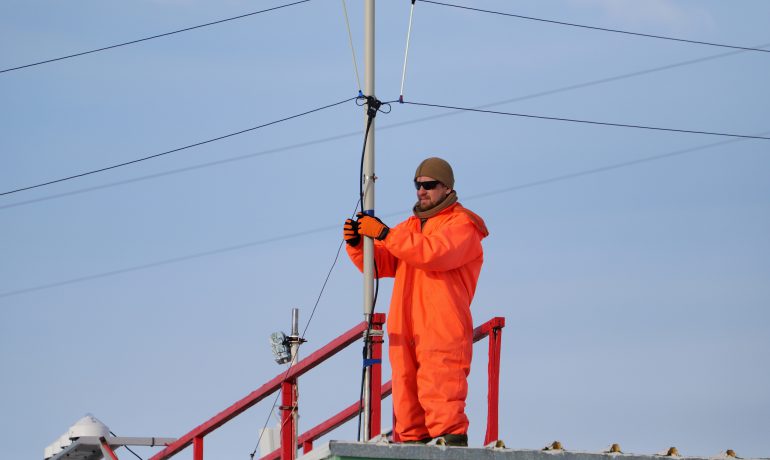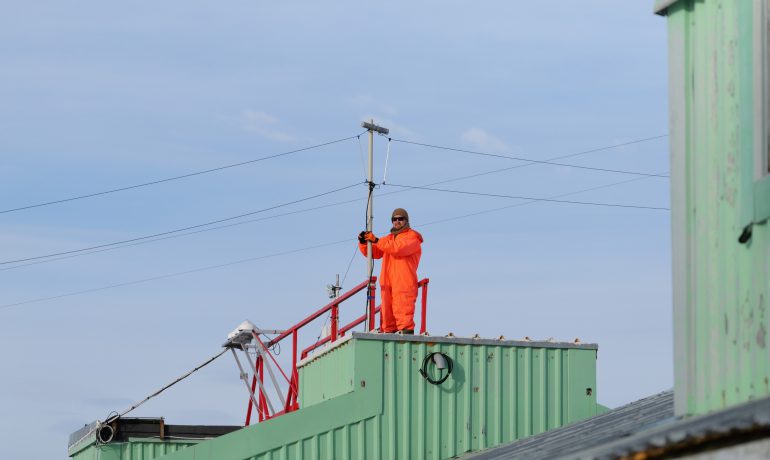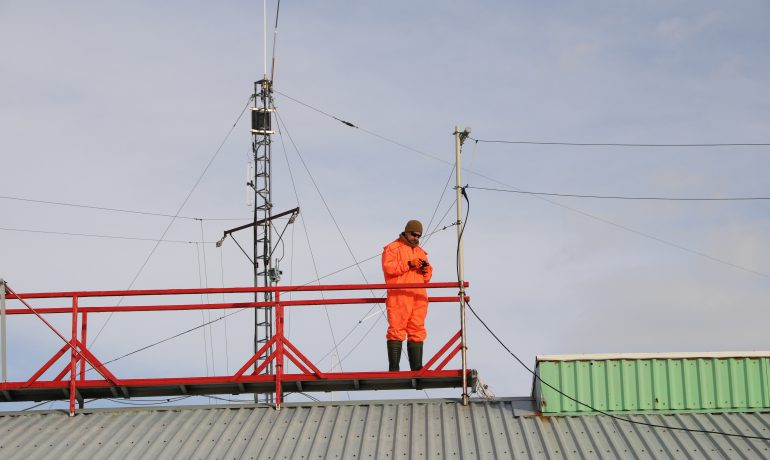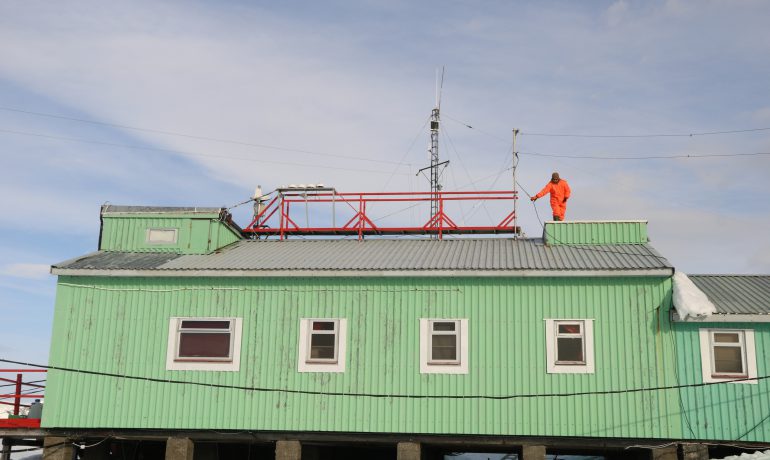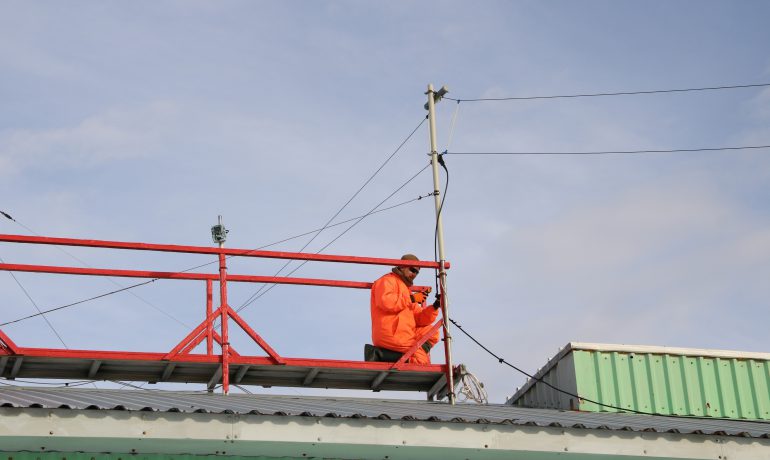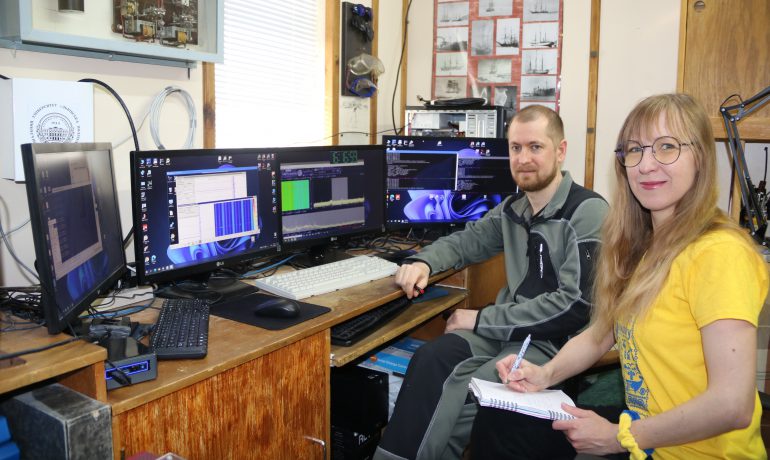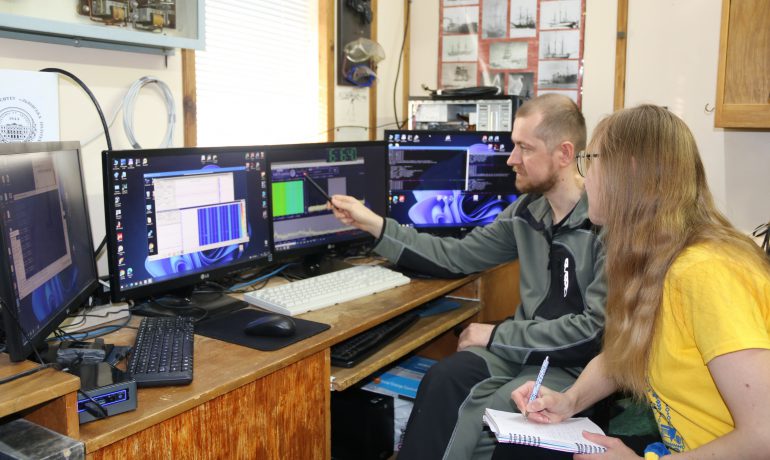Geophysicists at Akademik Vernadsky station conducted new important research during the annular eclipse of the Sun that occurred in early October over the Pacific Ocean.
The experiment involved the study of the ionosphere, one of the upper layers of the atmosphere, which contains many free ions and electrons. Because of this, the ionosphere is able to produce electric current and reflect high-frequency radio signals used to transmit information over long distances.
Ionization of the upper layers of the atmosphere occurs mainly under the influence of ultraviolet radio emission of the Sun. During an eclipse, it is quickly covered by the Moon: almost as much as the light we see. Therefore, scanning the ionosphere during this period gives scientists new information about it that cannot be obtained under normal conditions.
What was the experiment?
The propagation of high-frequency signals over ultra-long distances has been studied for many years at Vernadsky station to diagnose large-scale ionospheric irregularities,
The radiation of time service stations, which has extremely high long-term stability of parameters, is often used as probing signals (i.e. interacting with the ionosphere). For example, CHU from North America.
Since 2010, at Vernadsky, ionospheric probing on ultra-long radio lines using signals from shortwave time signal radio stations has been carried out using a digital receiving and measuring complex, which includes WiNRADiO WR-G313i receivers. During this year’s seasonal expedition, a new modern WiNRADiO WR‑G35 DDC receiver, capable of receiving signals simultaneously on several frequencies, was installed at the station.
It was this receiver that recorded signals during the eclipse of the Sun. During the experiment, it received signals not only from CHU (radio station, Canada), but also from the radio station WWVH, located in Hawaii.
This made it possible to obtain valuable information about the state of the ionosphere directly in the eclipse zone. For example, does radio wave propagation occur on the return path, how does the height of the ionospheric layers and the number of ionized particles change under the influence of rapid changes in ionizing radiation.
Taking this into account, scientists will be able to improve ionospheric models. They are used to improve the quality of positioning in global navigation satellite systems, predict the conditions of ionospheric radio communication between remote regions of the world, communication with satellites, etc.
Photo: Oleksandr Matsibura, Anna Soina, Oleksandr Bogomaz



